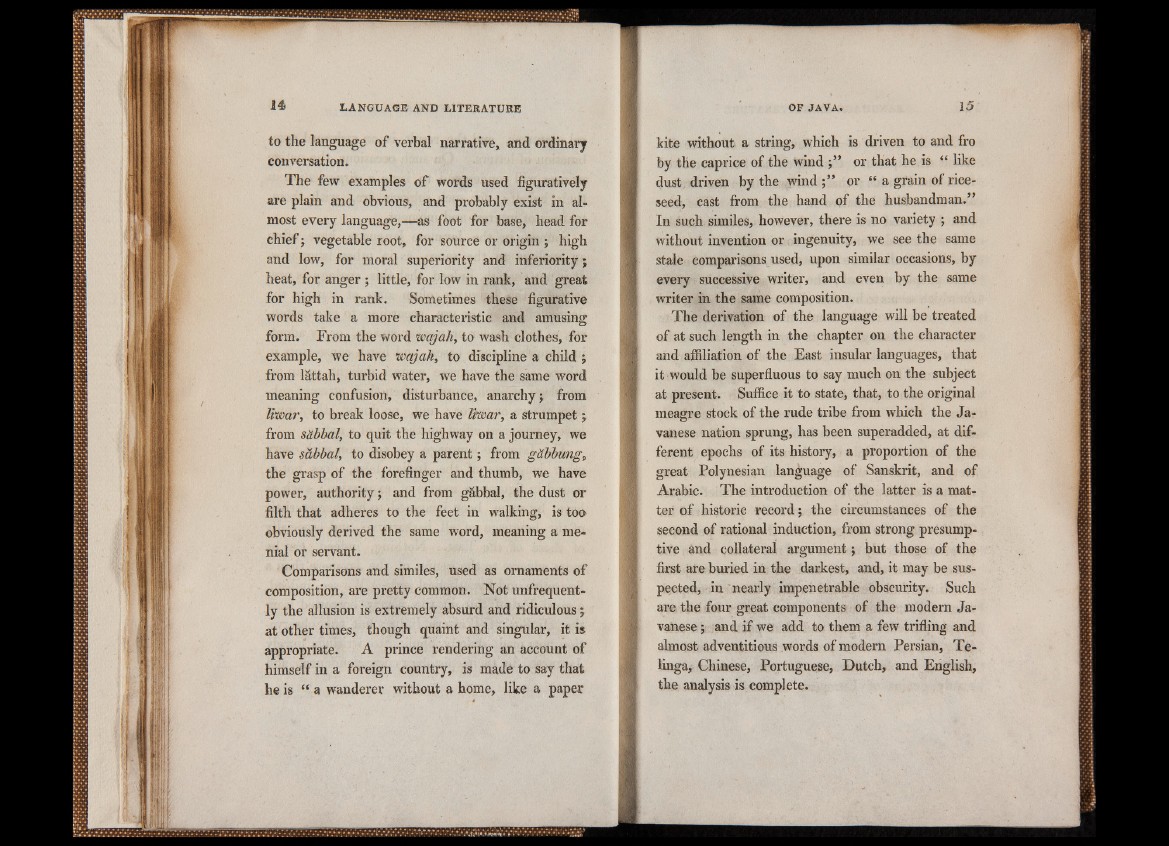
to the language of verbal narrative, and ordinary
conversation.
The few examples of words used figuratively
are plain and obvious, and probably exist in almost
every language,—as foot for base, head for
chief; vegetable root, for source or origin ; high
and low, for moral superiority and inferiority;
heat, for anger ; little, for low in rank, and great
for high in rank. Sometimes these figurative
words take a more characteristic and amusing
form. From the word wajah, to wash clothes, for
example, we have 'wajak, to discipline a child ;
from lattah, turbid water, we have the same word
meaning confusion, disturbance, anarchy; from
Ivwar, to break loose, we have Irnar, a strumpet;
from sdbbal, to quit the highway on a journey, we
have sdbbal, to disobey a parent; from gdbbung,
the grasp of the forefinger and thumb, we have
power, authority; and from gabbal, the dust or
filth that adheres to the feet in walking, is too
obviously derived the same word, meaning a menial
or servant.
Comparisons and similes, used as ornaments of
composition, are pretty common. Not unfrequent-
ly the allusion is extremely absurd and ridiculous;
at other times, though quaint and singular, it is
appropriate. A prince rendering an account of
himself in a foreign country, is made to say that
he is “ a wanderer without a home, like a paper
kite without a string, which is driven to and fro
by the caprice of the wind or that he is “ like
dust driven by the wind ;” or “ a grain of rice-
seed, cast from the hand of the husbandman.”
In such similes, however, there is no variety ; and
without invention or ingenuity, we see the same
stale comparisons used, upon similar occasions, by
every successive writer, and even by the same
writer in the same composition.
The derivation of the language will be treated
of at such length in the chapter on the character
and affiliation of the East insular languages, that
it would be superfluous to say much on the subject
at present. Suffice it to state, that, to the original
meagre stock of the rude tribe from which the Javanese
nation sprung, has been superadded, at different
epochs of its history, a proportion of the
great Polynesian language of Sanskrit, and of
Arabic. The introduction of the latter is a matter
of historic record; the circumstances of the
second of rational induction, from strong presumptive
and collateral argument; but those of the
first are buried in the darkest, and, it may be suspected,
in nearly impenetrable obscurity. Such
are the four great components of the modern Javanese
; and if we add to them a few trifling and
almost adventitious words of modern Persian, Te-
linga* Chinese, Portuguese, Dutch, and English,
the analysis is complete.